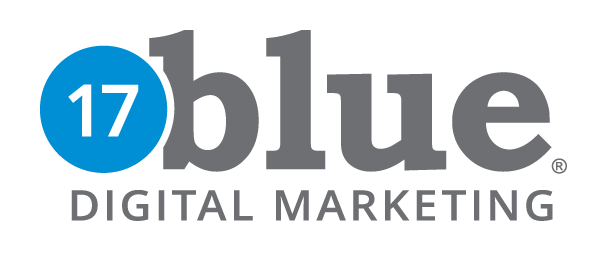Search engine optimization (SEO) is an evolving effort. Finding the right balance between “too much” and “not enough” optimization is a battle. It’s an epic battle business owners and marketing professionals have been engaged in for years. It’s part of the war between the dark side of “black hat” SEO… and the good guys engaging “white hat” SEO strategies.
The Dark Side: Black Hat SEO
Even if you like storm troopers in the movies, black hat SEO tactics are not heroic measures for content optimization efforts today. Black hat SEO refers to a set of practices that are used to increases a site or page’s rank in search engines through means that violate the search engines policies and terms of service. Basically it’s trying to hack or “game” the system instead of honestly earning the traffic you desire through actions that follow the rules and increase value.
Black hat tactics are employed because they work… for a while. But in the long run cheating, hacking and gaming your way to better search engine results through black hat tactics will hurt your ranking, domain authority and could even get you banned from the search engine entirely. Clear warnings against black hat SEO practices are posted on Google’s Webmaster Guidelines and Bing’s Webmaster Guidelines.
What are Black Hat SEO Tactics?
Google and Bing both make it clear what not to do. And their lists of offending behaviors are practically identical. Because search engines exist to give users a good experience by delivering relevant, quality content… they take it seriously when sites violate these guidelines and serve up fake, duplicate or stuffed content.
A commonly recognized example is Keyword Stuffing – the practice of intentionally “stuffing” content with excessive and unnatural keywords to manipulate search results. In the early days of SEO, more keywords usually meant your page performed better. But, it didn’t take long for Google and others to see how SEO “specialists” were hacking the system by stuffing keywords into random content, hiding extra keywords on the page and more sneaky tactics. Google’s response was to begin filtering out sites that used key word stuffing, as they proved to contain useless information for users.. Now after Google’s Panda, Penguin, and many other algorithm updates, keywords have a new set of rules.
- Keywords are a fraction of current optimization efforts
- Human engagement and social interaction are measured to validate content relevance
- Keywords in code are virtually ignored
- Excessive or irrelevant keywords draw penalties and reductions in domain authority and trust.
- Habitual abuses can get you banned
Additional black hat tactics to avoid include the following techniques:
- Scraped or copied content
- Creating pages duplicate content, or little-to-no original content
- Participating in link schemes
- Cloaking or sneaky redirects
- Hidden text or links
- Creating pages with malicious behavior (phishing, viruses, or other malware)
Black hat tactics may work for short-term results in some cases, but they can cost you a lot in the long-run. So let’s not play on the dark side. I know you wanted a light-saber, but good news… the good guys have them, too.
A Force for Good: White Hat SEO
White hat SEO involves practices that adhere to search engine guidelines. But it’s more than just following the rules – white hat strategies have integrity, build trust and build in value over time. Optimizing content for your audience (users) requires research, analysis, skill and patience. And it pays.
Famously in 2010, Matt Cutts declared Google uses over 200 ranking factors. He also said that each factor had multiple variations. And there are many who dispel the entire claim as a myth intended for stirring up media (which it did create for years). But ultimately, no matter how many factors there are, paying attention to top factors and more importantly – the principles that drive all factors – will serve you well.
5 Driving Principles of White Hat SEO
Know your audience. It’s true in all forms of marketing, but especially when you’re graded for meeting their expectations. Do your homework! Ultimately, you’re answering a user’s search question. So it pays to know what they’re asking, why they care, and where they’re looking.
Make it easy to find answers. This covers everything from putting mobile users FIRST to making the navigation intuitive and EASY to use. Give your user an experience that is simple to understand and easy to enjoy. And answer the questions they pose in a relevant and helpful way.
Your site is for human users. Bots may crawl. Algorithms may weigh. But it’s the human experience they’re all tracking. Engage and inform the human visitor with images, video, and information they want. Shares, likes, votes, comments, links… ALL MATTER. Attract the people and the engines notice.
Don’t cut corners. If you short-cut your content or it’s optimization, you’re unraveling the three principles just listed here. Authority is earned, not purchased. Do it right. Give it time.
Pay Attention. Feedback, reviews, and analytics are available from Google, from social media, from tracking software… Use this data to inform your efforts. You’ll get it right more often and more efficiently. Knowledge is power. Pay attention to the constant innovations in analytics, SEO strategies and tracking. Key marketing tools will change with technology.
5 Major Factors for White Hat SEO
These factors or criteria are in direct support of the principles above. It’s no surprise they’re listed front-and-center on Google and Bing webmaster guidelines.
Content: Content is listed first on Bing’s guidelines, which state, “Your content should be easy to navigate, rich and engaging to the visitor, and provide them the information they seek.” Content is analyzed for volume, age, update frequency and type, media, relevance, etc…
Links. Legitimate back-links to your site from other sources are evidence of trust and value. Do not buy links or manipulate links with schemes. Links between your own pages and content add value, too, but quality back links are the most important as they are earned and indicate relevance and trust.
Social: Social signals are simply human proof by interaction. When people like, share and comment, they are giving some level of endorsement to your content and media. Influence is measured by follower counts, interactions and more.
Indexing: Make sure content is easily available for crawling and indexing. From the non-technical aspect, make sure your content is organized in a way that makes sense to the user. Put important information in easy to reach places and plan your navigation hierarchy for visitors to scan and find what they’re looking for. This factor can directly involve site structure, sitemaps, .htaccess file rules and other parts of technical SEO.
Technical: Ensure your site is mobile-friendly. Plan for a smooth user-experience on multiple devices. Work with your developer to ensure clean site structure, cross-browser testing and check variables like page load time. Remember all forms of content can be optimized for search – text, images and video.
Don’t Abandon Your Post.
No matter where you are in your development of a library of optimized content, your best weapon is going to be persistence. Don’t abandon your post. Stick with it. Create meaningful content and engaging experiences. Observe responses, listen to the questions… fine tune and keep going. Staying the course will be your best advantage in 3 months, 6 months, a year or more.






